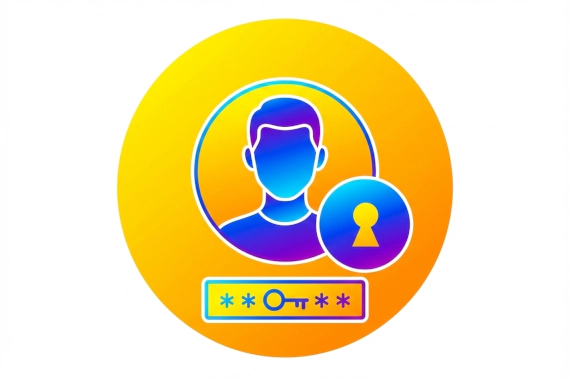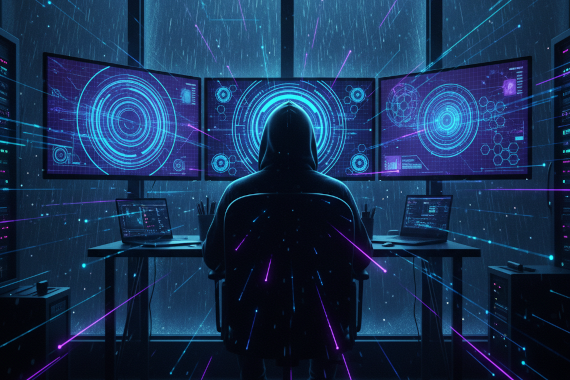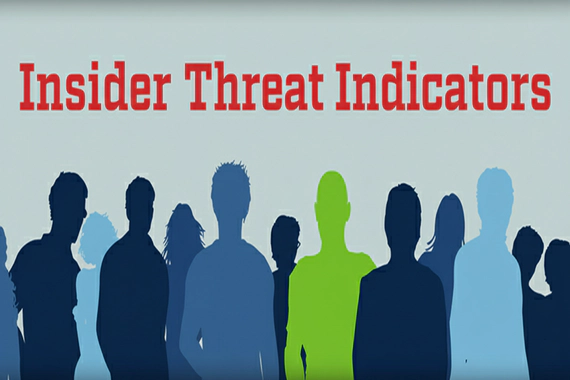
Account Takeover Prevention: How to Stop ATO Attacks Before They Happen
Authentication Dark Web Cyberattack Trends
What Is Account Takeover Prevention? Your organization’s credentials are already on the dark web. The question is …

Learn which dark web browsers protect your identity and which ones expose you to tracking.
• Tor Browser provides strong anonymity but law enforcement can track users through timing analysis attacks.
• Brave’s Tor mode leaks identifying information.
• Set up Tor-over-VPN and enable Safest mode to protect against tracking and malware threats.
• Accessing the dark web is legal. Buying drugs or stolen data is what gets you arrested.
3 million people access the dark web daily, with illegal websites making up 60% of the sites visited (Panda Security). The browser you choose determines how anonymous you are.
Here’s what most guides won’t tell you. Law enforcement successfully deanonymized Tor users in Germany using timing analysis. The FBI exploited Firefox vulnerabilities to unmask Silk Road’s operator. Even Tor Browser can be tracked if you don’t understand what you’re actually protecting against.
This guide covers the five browsers you should use to access the dark web, how law enforcement breaks anonymity, and the critical mistakes most people make.
Let’s start with the browser everyone claims is foolproof.
The dark web is a small encrypted portion of the internet requiring special browsers to access.
It makes up 0.01% of the deep web (Digital Guardian). The deep web is 90-95% of the internet that search engines don’t index, like your email and bank account. The dark web is intentionally hidden, requiring software like Tor Browser to access sites with .onion addresses.
.onion sites are websites that only exist on the Tor network, accessible exclusively through Tor Browser. These addresses end in .onion instead of .com or .org and cannot be reached through regular browsers.
The Tor network hosts over 65,000 .onion URLs (TrueList). 60% of dark web domains host illegal content (Panda Security). But legitimate uses exist. Journalists use it to protect sources. Activists bypass censorship in authoritarian countries. Whistleblowers use platforms like SecureDrop to anonymously leak information.
3 million people access the dark web daily (Panda Security). Most aren’t criminals. They’re protecting their privacy, circumventing surveillance, or accessing information censored in their country.
The browser you choose determines whether you stay anonymous. Let’s start with the one everyone uses.
Tor Browser is the most widely used dark web browser with 2-3 million daily users in 2025 (DeepStrike).
It’s a modified version of Firefox that routes your traffic through a global network of about 8,000 volunteer relays (EarthWeb). Each relay only knows the previous hop and next hop, not the full path, making it extremely difficult to trace activity back to your identity.
Here’s what most articles won’t tell you. 85% of Tor users browse regular websites, not .onion sites (TrueList). They’re using Tor to bypass censorship, not to access illegal markets.
But here’s the problem. Tor isn’t foolproof.
Understanding Tor’s limitations is critical before you decide to rely on it. Let’s look at the real risks law enforcement exploits.
German police repeatedly deanonymized Tor users between 2019-2021 using timing analysis.
They operated their own Tor nodes for months, monitoring when data entered and exited the network Cybernews. If they control enough nodes and correlate timing patterns, they can trace traffic back to specific users.
The FBI uses different tactics. In the Silk Road case, they exploited a Firefox vulnerability in Tor Browser. They executed a malicious script that revealed Ross Ulbricht’s IP address, leading to his arrest (MIT Technology Review). The FBI also runs exit nodes to capture unencrypted data leaving the network (Anonymous Hackers).
Recent vulnerabilities prove Tor requires constant maintenance. In October 2024, a critical vulnerability in Firefox and Tor Browser was under active exploitation (Malwarebytes).
Here’s what this means. Tor provides strong anonymity against casual surveillance. Against nation-states running timing analysis attacks, it can fail.
So where does that leave you if Tor isn’t bulletproof? Let’s compare the alternatives.
Five browsers can access the dark web, but they’re not created equal.
Tor Browser remains the gold standard despite its vulnerabilities.
Why it works: Pre-configured for anonymity with three security levels (Standard, Safer, Safest). Safest mode disables JavaScript, blocking most tracking and exploit attempts (AVG Signal). It’s built on Firefox Extended Support Release with privacy patches, runs on Windows, macOS, Linux, and Android.
The catch: You need a Tor-over-VPN setup. Connect to a VPN first, then launch Tor Browser. This prevents your ISP from knowing you’re using Tor and adds an encryption layer before traffic enters the network. Without a VPN, your ISP sees Tor usage and can flag you for monitoring.
Real-world performance: The Tor network handles 12 million connections daily, peaking at over 15 million on weekends (TrueList). Expect slower speeds than regular browsing because your traffic bounces through multiple relays. Banking on speed? This isn’t your tool. Banking on anonymity against most threats? It is.
Download: Get it only from the official Tor Project website (torproject.org). Fake versions exist that install malware.
Tails (The Amnesic Incognito Live System) is a complete operating system designed for anonymity.
Why it works: Boot from USB, and it leaves zero traces on your computer. When you shut down, Tails erases everything unless you saved it to encrypted persistent storage.
Tails OS is an amnesic operating system that runs from a USB drive, routes all traffic through Tor, and leaves no trace on the host computer after shutdown, providing maximum privacy for sensitive activities.
The catch: More complex to set up than Tor Browser. You need to create a bootable USB drive with Tails 7.0. Every time you want to browse, you reboot into Tails.
When to use it: Your personal safety depends on anonymity. You’re accessing the dark web from a shared computer. You need zero forensic traces.
When to skip it: You’re casually browsing. Tails is overkill if you’re not facing serious threats.
I2P (Invisible Internet Project) serves a different purpose than Tor.
Why it’s different: I2P creates its own separate network focused on peer-to-peer connections and internal websites called eepsites. It uses garlic routing instead of Tor’s onion routing. Every device that connects strengthens the network. Most importantly I2P has no vulnerable exit nodes because traffic isn’t meant to exit to clearweb sites.
The catch: More complex setup. You must install routing software and configure your browser independently.
When to use it: You want secure communication within a hidden network. You’re hosting or accessing eepsites.
When to skip it: You want to browse the regular internet anonymously. Use Tor.
Freenet (renamed Hyphanet in mid-2023) is a peer-to-peer platform for censorship-resistant communication.
How it works: Data splits, encrypts, and distributes across multiple nodes. Each user’s system stores data on behalf of others. The current version is implemented in Rust for better efficiency.
The catch: The current version does NOT offer built-in anonymity. You’re responsible for configuring your own anonymity solution.
When to use it: You need censorship-resistant publishing. You’re comfortable with technical complexity.
When to skip it: You need built-in anonymity. Stick with Tor Browser.
Brave offers a “Private Window with Tor” feature, accessible with Alt+Shift+N.
Why it’s useless for real anonymity: Brave does NOT implement most privacy protections from Tor Browser. Testing revealed it leaks time zone, exact operating system, GPU, and screen resolution. Brave itself recommends Tor Browser for users whose “personal safety depends on remaining anonymous”.
When to use it: You’re casually learning about the dark web and don’t need real anonymity.
When to skip it: Your safety depends on anonymity. Use real Tor Browser instead.
Now you know which browsers work and which ones are security theater. But choosing the right browser is only half the battle. Let’s talk about staying safe.
Most people screw up the setup, not the browser choice.
The Tor-over-VPN approach (mandatory):
Connect to a VPN first, then open Tor Browser. The order matters. VPN encrypts your traffic before it enters the Tor network. Without it, your ISP sees you’re using Tor and can flag your account for monitoring or block Tor entirely.
Step-by-step setup:
Security settings that matter:
Use Safer or Safest mode in Tor Browser. Safer mode blocks risky content like JavaScript on unknown sites. Safest mode provides maximum protection but breaks functionality on some sites. Start with Safest, drop to Safer only if a trusted site won’t load.
Critical mistakes that get people in trouble:
Don’t download files. Don’t log into real accounts. Don’t reuse usernames. Don’t enter personal details. Use a dedicated device or virtual machine, not your daily laptop with your email and bank accounts.
The threats are real. Understanding them is step one. Understanding the legal risks is step two.
Accessing the dark web is legal in the United States and most countries.
Using Tor Browser, downloading it, connecting to the network are all legal. What gets you arrested is what you do once you’re there.
Operation RapTor arrested 270 people in 2025 across 10 countries (US Department of Justice). They seized over $200 million, 2+ metric tons of drugs, 144kg of fentanyl, and 180+ firearms. None were arrested for using Tor. They were arrested for buying drugs, running illegal marketplaces, and selling weapons.
Ross Ulbricht operated Silk Road. The FBI arrested him in 2013. He got life in prison (FindLaw). Eric Eoin Marques ran Freedom Hosting, which hosted drug markets and child abuse images. He faces up to 30 years (MIT Technology Review).
Law enforcement doesn’t care that you used Tor. They care what you used Tor for.
Legitimate uses remain fully legal. SecureDrop facilitates anonymous whistleblowing for Forbes, Vice Media, and The New Yorker. ProtonMail operates on Tor to protect privacy and combat censorship.
The line is clear. Accessing the dark web to bypass censorship is legal. Accessing it to buy drugs or stolen data will get you arrested.
But even legal use carries risks you need to understand. Let’s look at what actually threatens users.
The dark web isn’t just a place to browse anonymously. It’s where cybercrime gets weaponized.
What threatens you while browsing:
Over 78% of ransomware strains identified in 2025 originated from dark web distribution (PrivacySavvy). Download the wrong file, and you’ve infected your system. Many dark web sites serve malware disguised as legitimate tools or leaked data.
What’s sold there that threatens everyone else:
Billions of stolen credentials circulate on dark web forums and markets. Organizations with leaked credentials are 2.5x more likely to suffer a breach (PrivacySavvy). 65% of active criminals use this data to plan targeted attacks (Panda Security).
You can buy 1,000 premium malware exploits for $5,000 (Scoop Market). The dark web is where they buy tools, sell stolen data, and coordinate operations.
Scams are rampant:
You’re not browsing Amazon. There’s no buyer protection, no refund policy, no customer service. The dark web economy generates $1.5 billion annually from stolen data and illegal products (EarthWeb). If someone scams you on a dark web market, your money is gone.
Global cybercrime costs are projected to reach $10.5 trillion annually by 2025 (Bright Defense). The dark web is the marketplace that makes much of it possible.
Your employees’ credentials are probably already on the dark web.
Breachsense monitors the dark web for your organization’s exposed credentials, alerting you before attackers exploit them. Instead of waiting for a breach, you get early warning when passwords leak from third-party compromises, infostealers, or data breaches.
Stop wondering if your credentials are for sale. Start monitoring the dark web before attackers find them first.
Accessing the dark web is legal in the US and most countries. What gets you arrested is what you do there. Operation RapTor arrested 270 people in 2025 for buying drugs and running illegal marketplaces, not for using Tor Browser. Using Tor to browse anonymously is perfectly legal.
The dark web has real risks. Over 78% of ransomware strains identified in 2025 originated from dark web distribution. Use Tor-over-VPN, Under Settings, change the Security Level to Safest mode, never download files, and stick to known sites.
Tor Browser is completely legal in the United States and most countries. It’s open-source software designed to protect privacy and circumvent censorship. Journalists, activists, and whistleblowers use it legitimately every day. Using Tor itself is not a crime.
Yes. German law enforcement successfully deanonymized Tor users using timing analysis by correlating traffic patterns entering and exiting the network while operating their own Tor nodes for months. The FBI exploited Firefox vulnerabilities to unmask Silk Road’s operator. Tor provides strong anonymity but it’s not foolproof against well-resourced adversaries.
The deep web is 90-95% of the internet that search engines don’t index, like your email, bank account, and private databases (Digital Guardian). The dark web is 0.01% of the deep web, requiring special browsers like Tor to access. All dark web is deep web, but almost none of the deep web is dark web.

Authentication Dark Web Cyberattack Trends
What Is Account Takeover Prevention? Your organization’s credentials are already on the dark web. The question is …

Insider Threat Threat Intelligence Data Breach Prevention Security Operations
What Are Insider Threat Indicators? Security teams spend billions on perimeter defenses. Firewalls. EDR. Network …